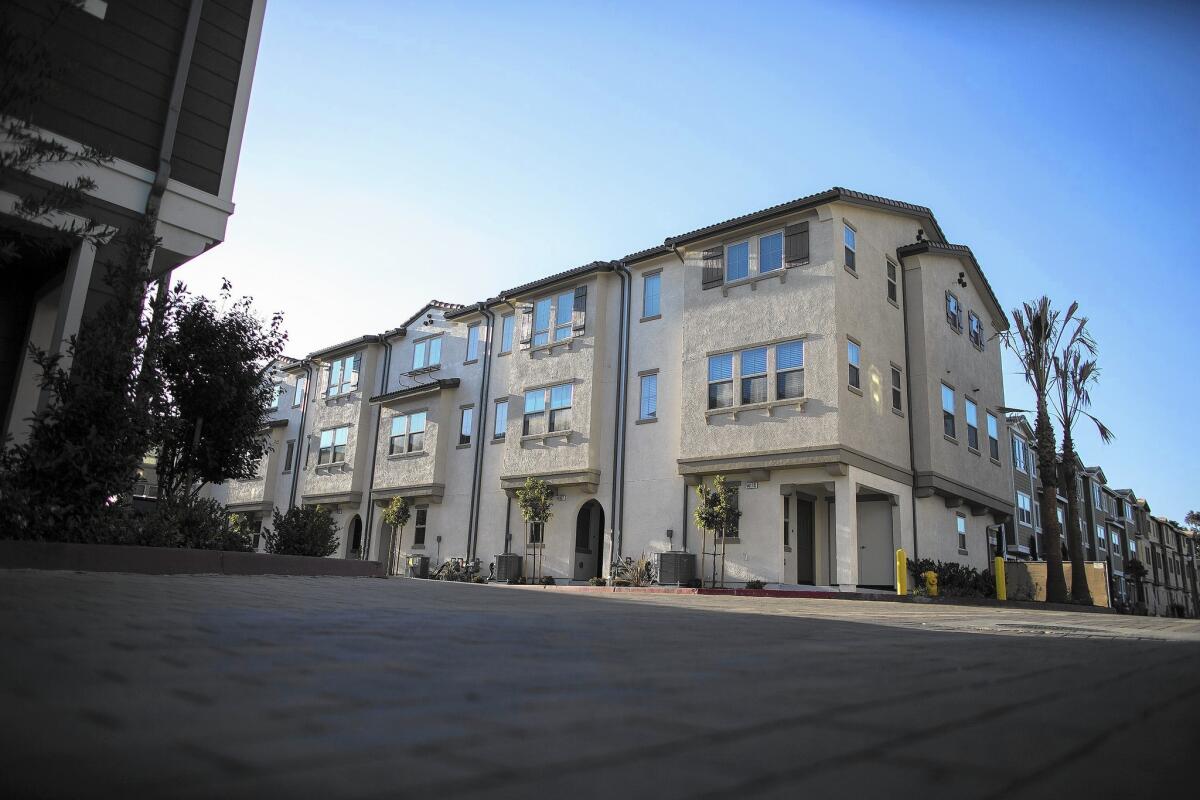Neighborhood Spotlight: Van Nuys

- Share via
From a hot, dry expanse of cattle ranches and wheat farms to the irrigated epicenter of the post-World War II housing boom, the trajectory of Van Nuys in the 20th century was one of real estate development at breakneck speed.
Circumstances and geography conspired to put Van Nuys at the social and political heart of the Valley.
The postwar boom made it a thriving middle-class area with plenty of high-wage manufacturing jobs, and some of the Camaros that came off the local GM plant’s assembly line rolled right out onto Van Nuys Boulevard as the broad thoroughfare became the center of L.A.’s car culture.
The lovely art deco-moderne City Hall and surrounding complex provided access to city services without requiring a trip downtown, creating an independent sense of self for the neighborhood and the Valley that would eventually lead to an attempt to secede from the city in 2002.
That manufacturing base took a hit in the 1990s and early 2000s. The GM plant, and numerous others, closed. The neighborhood struggled economically.
But now, with improved transit access and its proximity to the 405 Freeway and the Westside, Van Nuys is becoming an appealing destination for home buyers looking for affordable homes.
Housing developers are also coming back to Van Nuys. Small-lot subdivisions are sprouting up along Sherman Way and other area streets.
Neighborhood highlights
Commuting convenience: Van Nuys offers easy access to the 405 and 101 freeways and is also served by Metro’s Orange Line and the Metrolink Ventura Line to downtown L.A. If the latest transit proposal by Metro is approved by voters this year, a tunnel and train through the Sepulveda Pass could be built to cut travel times over the hill.
Park life: The Valley’s largest recreation area is just across the 405 in the Sepulveda Basin complex, which includes Lake Balboa, Woodley Park, the famous Japanese Garden at the Tillman Water Recreation Plant, a wildlife reserve and three golf courses. The Orange Line Bike Path also runs alongside the northern edge of the recreation area.

A new housing development at Greenwood Place off Chapparel Lane, near the intersection of Sherman Way and Hazeltine Avenue in Van Nuys.
Neighborhood challenges
Van Nuys today is a working-class neighborhood, an affordable gateway for immigrants coming to work in L.A. and an area with an established culture and identity. The addition of new middle-class housing developments, as well as the potential influx of home buyers fleeing Westside prices, could drive up prices and change the character of the neighborhood in disruptive ways.
Expert insight
Proximity to transit and jobs is a huge selling point for Van Nuys, said Glen Longarini, executive vice president of the Los Angeles-Ventura division of KB Home, which is building more than 130 homes in the neighborhood.
“Van Nuys is geographically the center of the San Fernando Valley — it has a great location,” he said. “On the supply side, Van Nuys offers favorable zoning, owners willing to sell and a City Council member and Neighborhood Council who are on board, all of which creates a great opportunity for new infill housing for buyers and developers.”
Market snapshot
The 91411, 91401, 91405 and 91406 ZIP Codes make up the majority of the area. In February, based on 15 sales, the median price for single-family homes in the 91411 ZIP was $710,000, according to CoreLogic. In the 91401 ZIP, the median price based on 15 sales was $621,000, and in the 91405 ZIP, the median price based on six sales was $538,000. The 91406 ZIP clocked in at $500,000 based on eight sales.
Report card
CHAMPS Charter High School of the Arts-Multimedia & Performing ranked highest for the area, with a score of 793 out of a possible 1,000 in the 2013 API ranking system. Cohasset Street Elementary earned a score of 773, and Columbus Avenue Elementary and Van Nuys Senior High both scored 766. Hazeltine Avenue, Valerio Street, Van Nuys and Sylvan Park elementary schools came in at 758, 754, 740 and 717, respectively. Valley Region Elementary No. 9 had a score of 675; Robert Fulton College Preparatory earned a score of 656; and Will Rogers Continuation scored 423.
More to Read
Sign up for Essential California
The most important California stories and recommendations in your inbox every morning.
You may occasionally receive promotional content from the Los Angeles Times.






